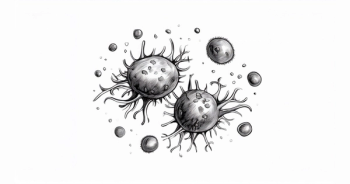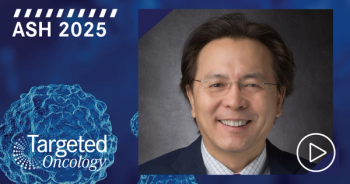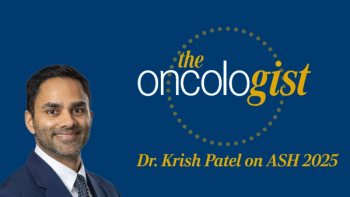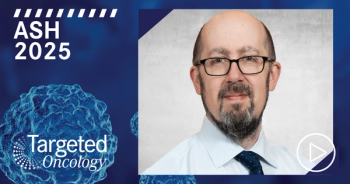
Frontline Treatment Considerations for Patients With MZL
John N. Allan, MD:When we’re dealing with first-line treatment options for marginal zone lymphoma, we typically put patients into 2 categories. We look for patients who might respond to single-agent rituximab, or anti-CD20 therapy, and then we try to identify patients who might benefit from more aggressive chemoimmunotherapy approaches. In general, we extrapolate how we treat patients in the frontline setting from how we manage our follicular lymphoma patients. These are both considered indolent diseases. They both can possibly be monitored and observed for periods of years before any treatment is indicated. We really look for those treatment indications that are commonly used in follicular lymphoma, such as bulky adenopathy, progressive adenopathy, cytopenia, and B symptoms. Things that are common among indolent lymphomas as treatment indicationswe look for those before we initiate.
If you have a low tumor burden or an older patient with comorbidities who may not tolerate chemoimmunotherapy, you may back off and use single-agent anti-CD20 therapy. If you have a younger patient who has bulky disease and/or is symptomatic, in which you need to get a more rapid and durable response, that’s where we employ our chemoimmunotherapy options, of which there are several.
When we determine how we want to treat and approach a patientwhether we observe them or we treat them at diagnosis—we really look into several factors. One is, how is the patient feeling? It’s a clinical assessment. Are they having symptoms? Are they bothered by the lymph nodes? Did they arise rapidly, or was this something that has slowly grown over time? Again, looking at their blood counts and their lab work will help determine the need and whether or not there are clear-cut treatment indications for whether or not to initiate. If the patient has a normal blood count, feels well, and has some lymphadenopathy that is relatively small, you can typically observe him or her and try to understand the pace of the disease prior to initiating treatment at diagnosis.
With nodal marginal zone lymphoma, many patients do present with bulky adenopathy and typically require treatment at diagnosis. However, that’s not always the case. Again, you’d look at the clinical scenario of this specific patient and what would meet their needs.
Transcript edited for clarity.
A 65-Year-Old Man With Advanced Nodal MZL
November 2014
History & Physical:
- A 65-year-old man presented with multiple lumps in groin, no pain
- PMH: negative for HCV, HBV, HIV
- PE: marked swelling in right axillary and bilateral inguinal lymph nodes
- ECOG performance status: 0
- Otherwise healthy, no history of CV disease or diabetes, weight within normal range
- CT revealed lymphadenopathy at multiple nodal sites with multiple involved nodes (each <2 cm) involved at each site; no extranodal involvement or bulky disease
- Biopsies confirmed presence of B cell infiltrate
- IHC: B cell phenotype CD20, CD19
Treatment History:
- He was started on active monitoring with CT, histology, and pathology every 6 mo.
November 2015
- At 12 months following diagnosis, disease progression was shown on imaging, with additional involved axillary nodes
- The patient was started on treatment with bendamustine/rituximab (BR)
November 2017
- Follow-up imaging at 2 years following initiation of BR revealed disease progression in multiple lymph nodes at several sites
- 2 nodes measuring >3.0 cm
- The patient was started on R-CHOP; he achieved a partial response
June 2018
- 7 months later, the patient developed relapsed disease
- He was started on treatment with ibrutinib 560 mg/day orally
- He developed mild diarrhea (managed with OTC anti-diarrheal) and bruising on legs from minor bumps
- Follow-up CBC showed grade 3 neutropenia without fever
- Ibrutinib was discontinued until neutrophils recovered and restarted at same dose without incident








































